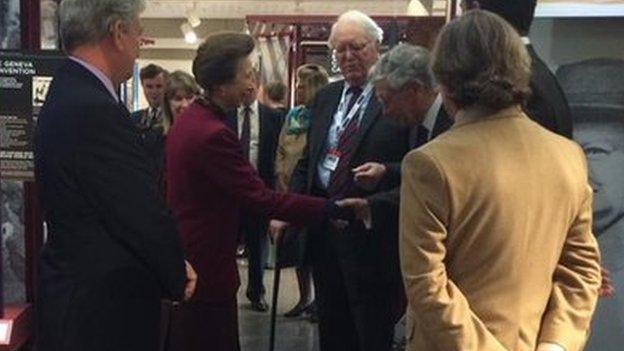Soldiers of Oxfordshire Museum military objects tell stories of the past
- Published
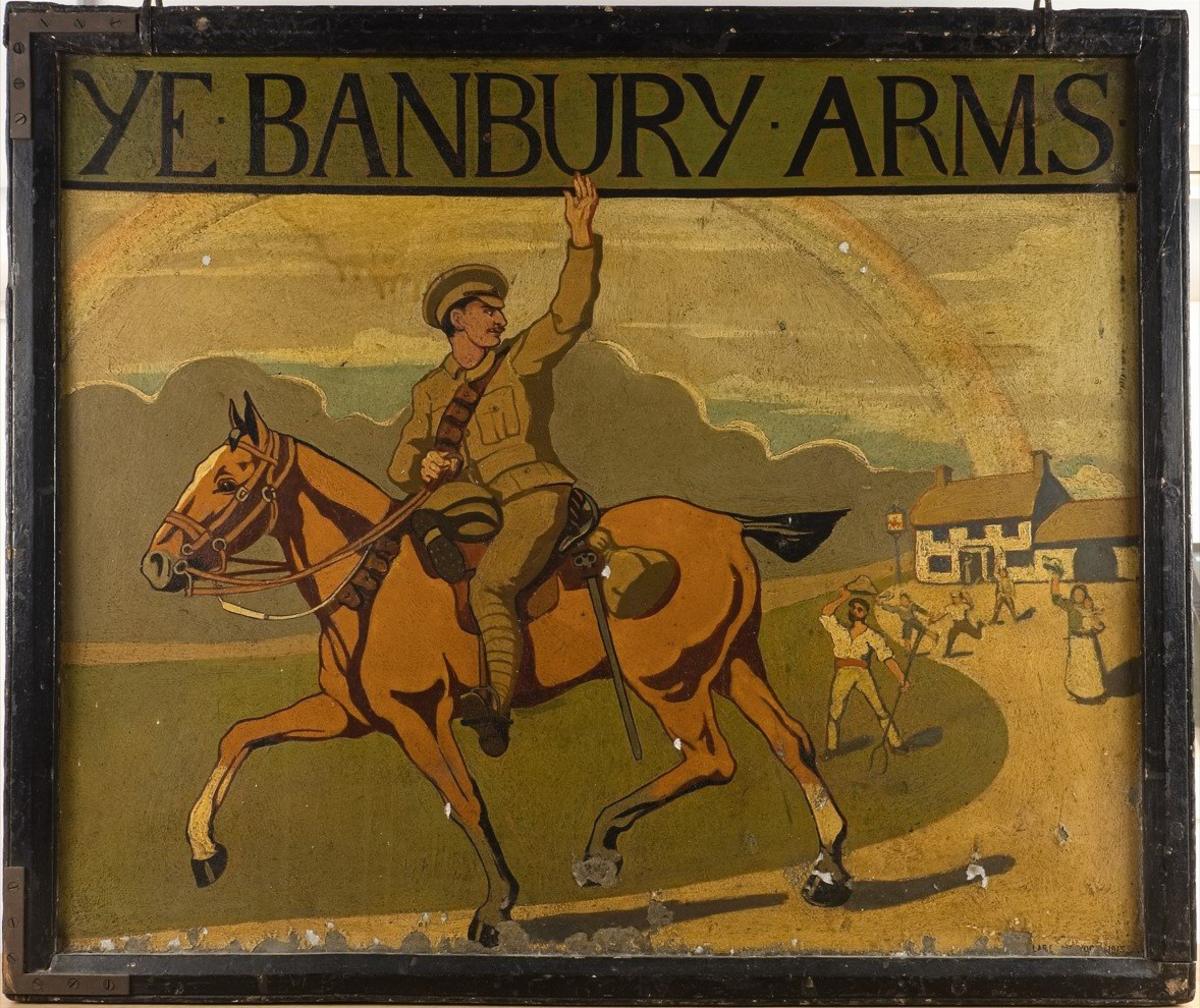
"Ye Banbury Arms" is a fictional pub, but its much-travelled sign represented "D" squadron, which liberated the Belgium town of Erquelinnes in World War One
A museum is building up an online series of snapshots from military history, telling stories from bygone conflicts through the fascinating objects left behind.
Ursula Corcoran, director of the Soldiers of Oxfordshire Museum, says the idea came as a response to the demands of the Covid pandemic.
"Lots of people want us to do talks and using visuals is ideal," she told the BBC.
"We've selected 50 of the best objects that really depict what the county has to offer in terms of military heritage."
We take a closer look at some of the items gathered by staff and researchers at the Woodstock museum.

Queen's Own Oxfordshire Hussars officer's hat

The Queen's Own Oxfordshire Hussars had training camps across Blenheim Park, South Park and Wytham.
Their dress uniform was elaborate and colourful, and thought of as over the top by soldiers from other regiments during World War One. This hat is a busby, made of sable fur.
Winston Churchill, who was born a stone's throw from the museum at Blenheim Palace, was involved with the regiment from 1901, and part of the Woodstock Squadron and Henley Squadron.

Bergen-Belsen watch

This is one of the thousands of watches British soldiers found at the Bergen-Belsen concentration camp, where more than 50,000 people died from disease and starvation during World War Two.
George Leonard, who before the war worked for the Pressed Steel Company at Cowley making motorcar bodies, brought the watch home.
His daughter Viv Dudman used it in talks to school groups, telling pupils: "It is a very special watch - it is a life."
The 249th battery of the 63rd Oxfordshire Yeomanry Anti-Tank regiment was responsible for the takeover of the Bergen-Belsen camp.

'Jolly Boy' wooden mannequin
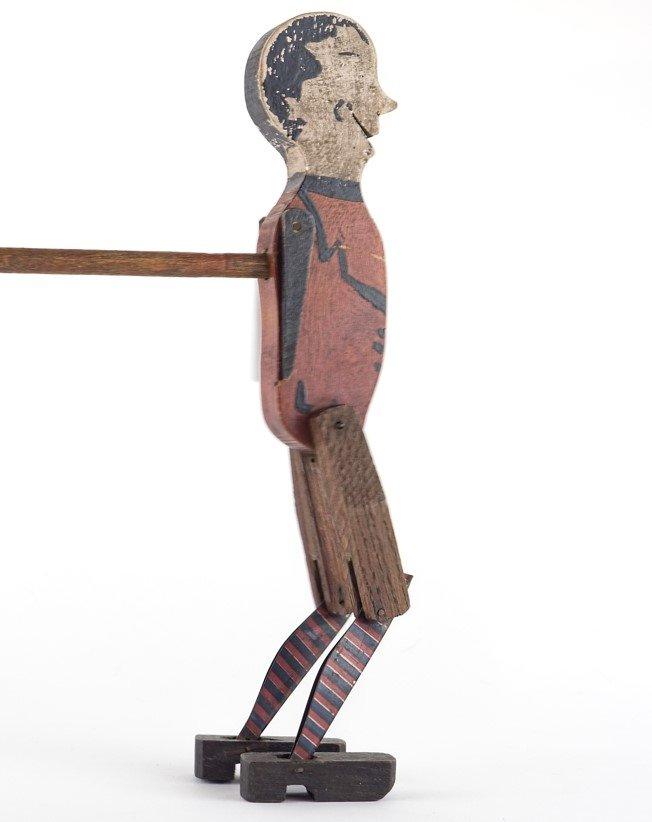
"Jolly Boy" belonged to Private Thomas A Franklin, from "A" Squadron of the Queen's Own Oxfordshire Hussars.
When morale was low he would entertain his fellow soldiers by singing with the mannequin.
"You think that when you're in the trenches, you have activity all the time and it wasn't like that at all," Ursula Corcoran says.
"There could be a lot of boring times and soldiers had to find ways to occupy themselves."

Engraved brass shell cases by prisoners of war
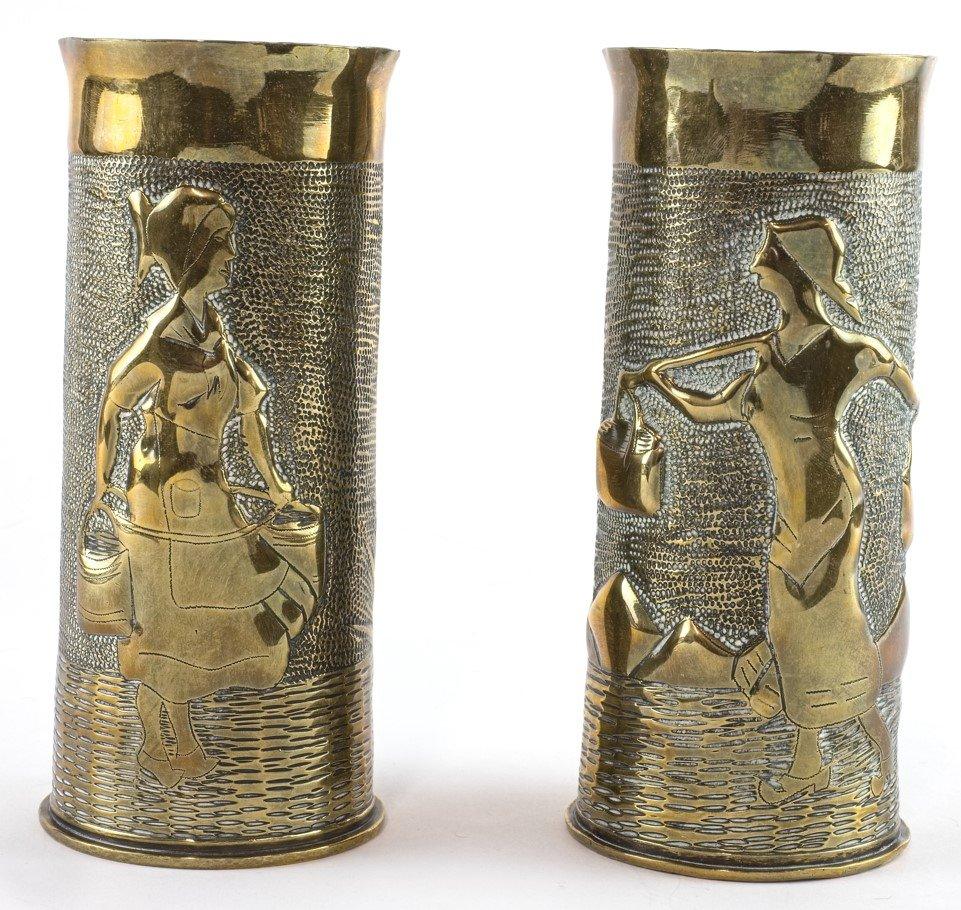
During World War Two there were camps throughout Oxfordshire that held Italian and German Prisoners of War (POWs), such as Camp 43 at Harcourt Hill.
Some occupants included craftsmen who produced some fine work.
Under the Geneva Convention they could be employed on certain tasks such as agriculture, but some whiled away the hours by carving or engraving objects that could get sold or exchanged for minor luxuries.
These shell cases were engraved by Italian POWs.
Shell cases from firing ranges would normally be salvaged but could also be scrounged by the enterprising, who could turn them into attractive artefacts.

Magic lantern slide
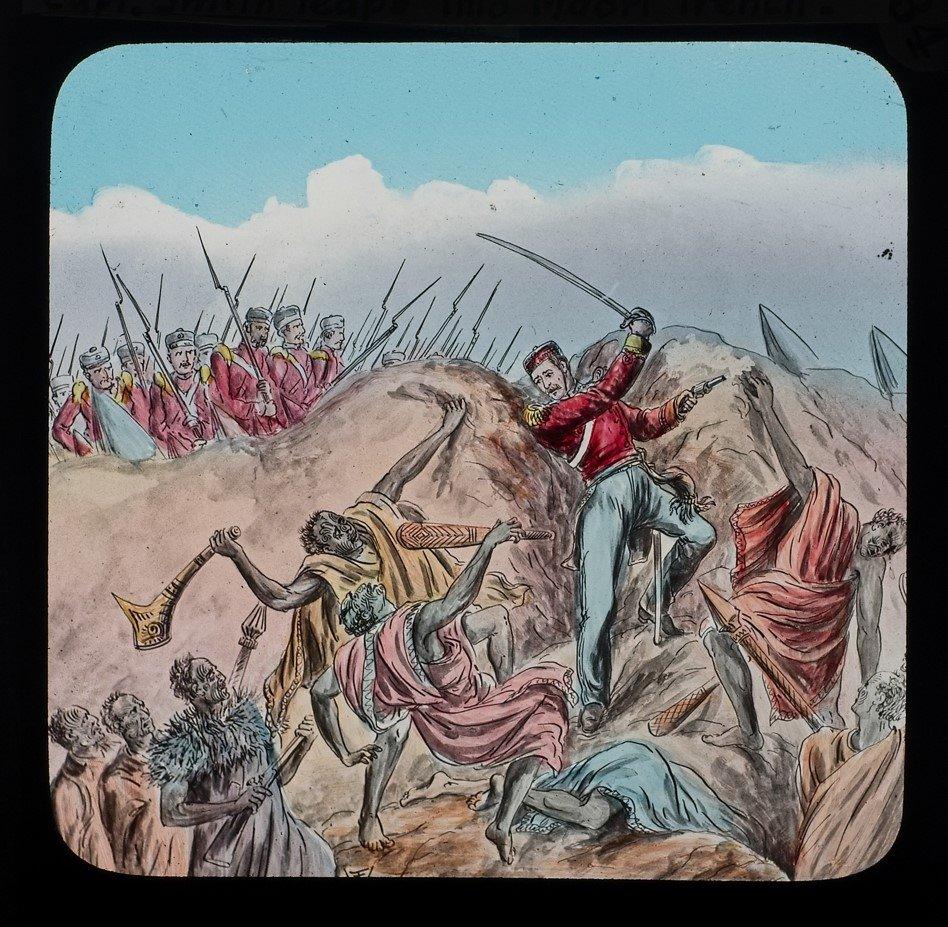
In the New Zealand Wars (1845-1872) British troops fought the Maoris who wished to preserve their northern island.
The museum has several slides that show Capt Augustus Smith of the 43rd Regiment of Foot (later the Oxfordshire and Buckinghamshire Light Infantry) at Tauranga in 1864.
He led a charge and was struck by a bullet in his leg but carried on. Smith was awarded the Victoria Cross for his leadership.

Child's evacuation coat
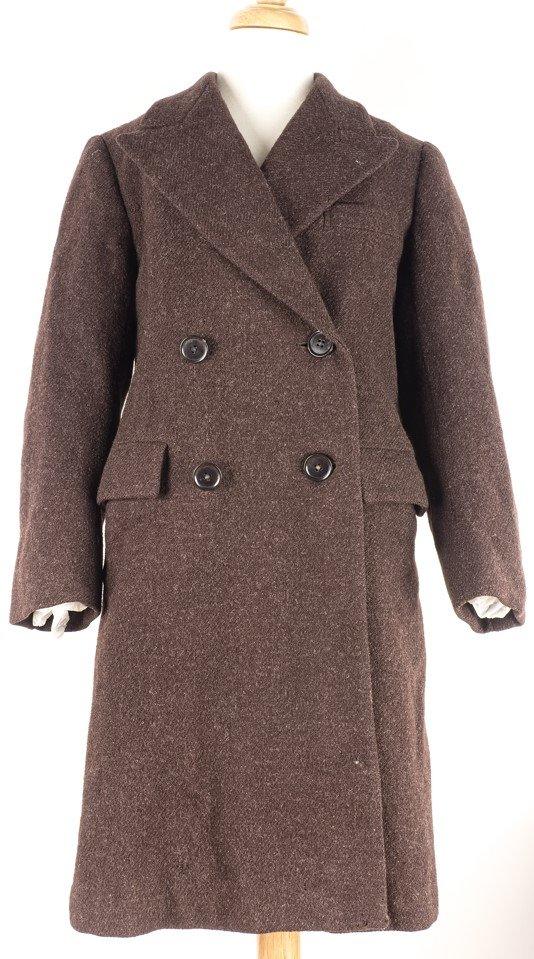
This evacuee coat belonged to Philip Leuan Williams, who wore it as a child in 1941.
Parents were issued with a list detailing what their children should take with them when evacuated.
It included a gas mask in a case, change of underclothes, night clothes, plimsolls (or slippers), spare stockings or socks, toothbrush, comb, towel, soap, face cloth, handkerchiefs and warm coat.

Drawing of Mk1 Horsa Glider
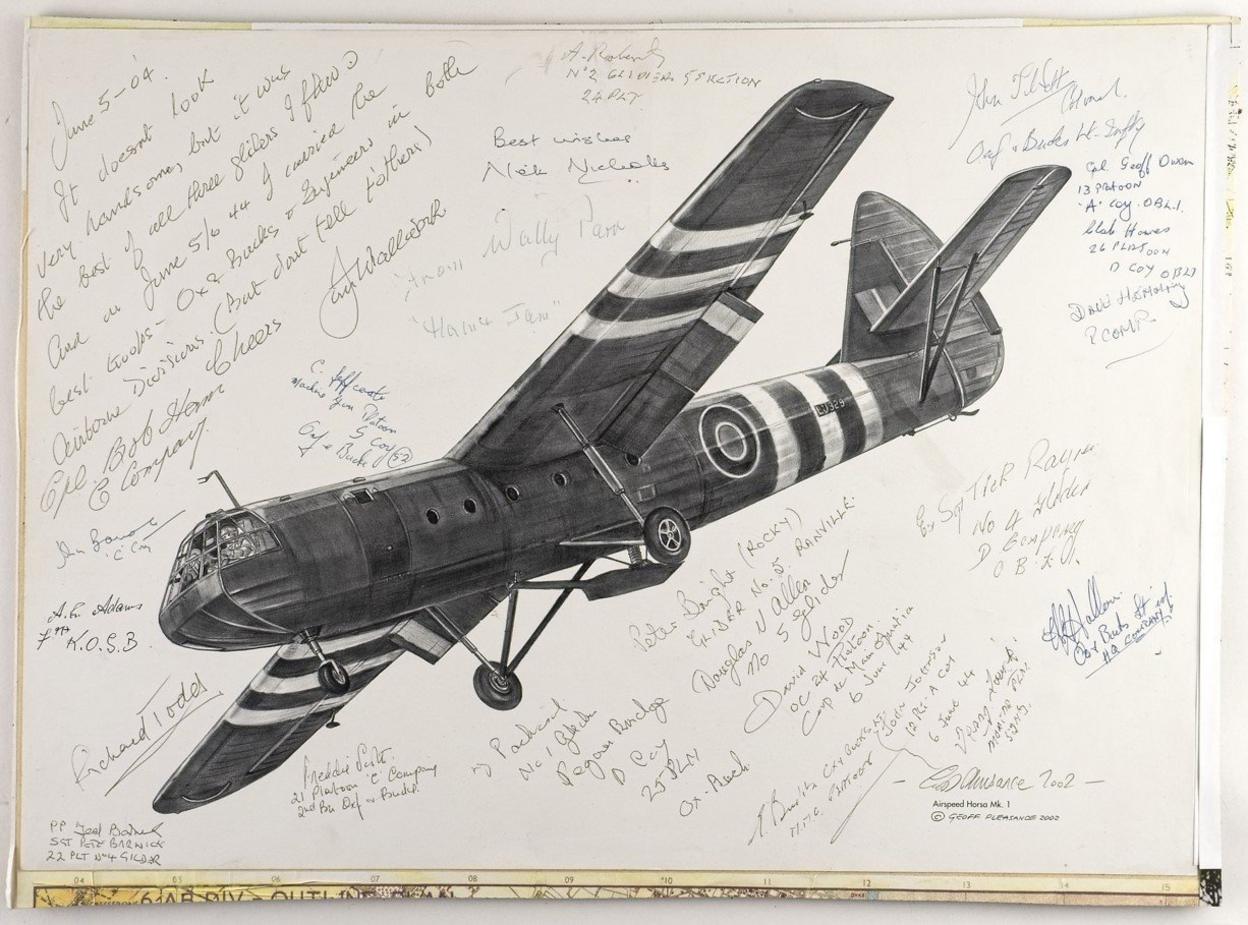
The 2nd Battalion Oxfordshire and Buckingham Light Infantry was the first to land by glider on D-Day.
The taking of the Pegasus and Horsa bridges was essential, as they were strategic positions that prevented German forces being able to attack soldiers arriving at Sword Beach from the eastern flank.
This drawing was signed by men who had either been in one of the Pegasus Bridge gliders, flown one or parachuted out of one.

Co-Operative and Industrial Society war memorial

This war memorial features members of the Co-Operative and Industrial Society who perished in World War One.
The society formed in 1872, initially operating from Oxford's George Street, but later branching out to Cowley, Witney and Headington. It focussed on grocery, coal and drapery.
The memorial was given to the museum shortly after it opened in 2014.
Oxfordshire's Military Heritage in 50 Objects will go live on the Soldiers of Oxfordshire Museum website in January.

Follow BBC South on Facebook, external, Twitter, external, or Instagram, external. Send your story ideas to south.newsonline@bbc.co.uk, external.
Related topics
- Published8 November 2022

- Published30 July 2022
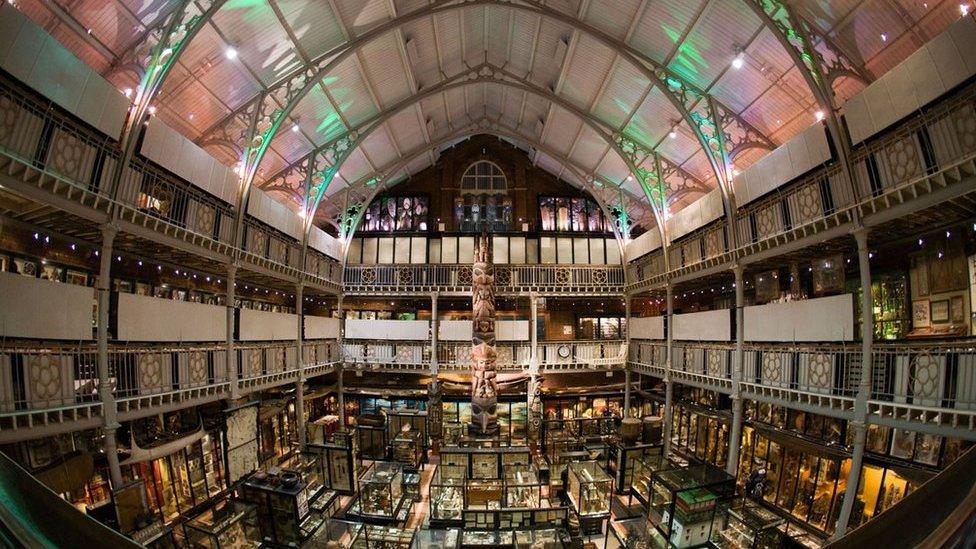
- Published11 October 2021

- Published25 September 2014
